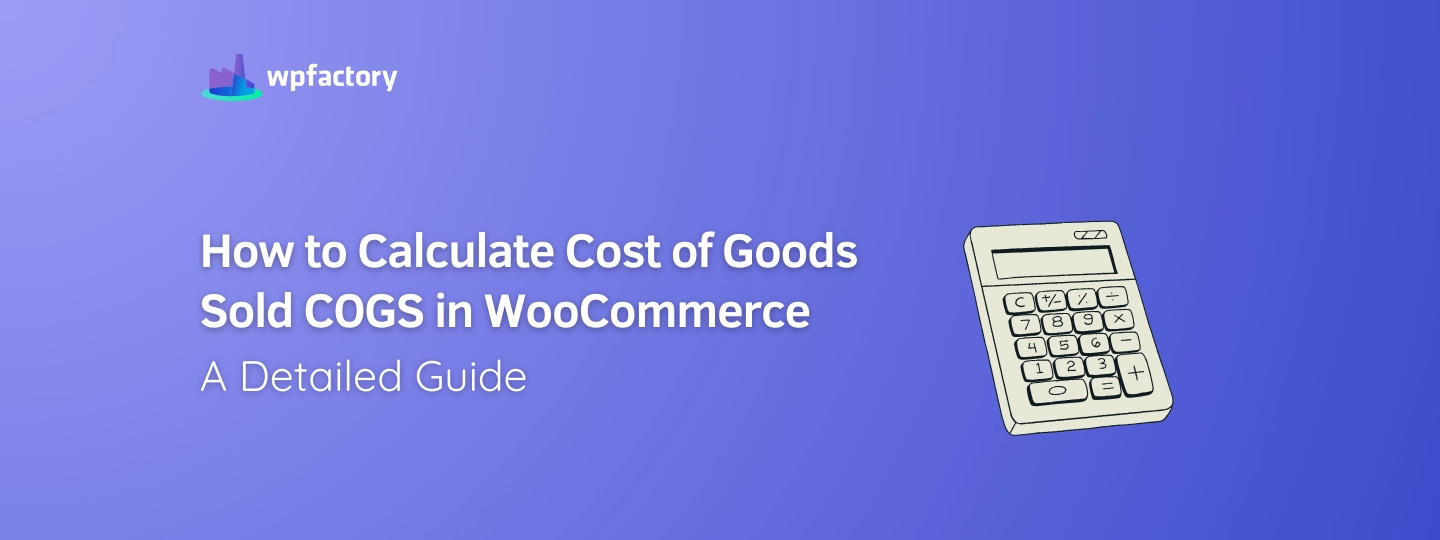How to Calculate Cost of Goods Sold COGS in WooCommerce: A Detailed Guide
More revenue and more profits are the goals of any business, that’s why you need your cost of goods sold to go down.
Cost of goods sold (COGS) is the direct cost of inventory sold in a specific period. When COGS is high it eats from your profit margins, until it could turn into a loss.
Cost of goods sold is an important metric that investors use to evaluate the profitability of a business and its growth potential, the Cost of Goods Sold (COGS) is deductible for tax purposes, and it can reduce a company’s taxable income, thereby lowering its tax liability.
In this article, we’ll discuss everything you need to know about how to calculate COGS and tips on reducing it.
Why Cost of Goods Sold is an Important Metric to Track?
To simply answer, if you don’t know your costs then you will never know if you’re making money or losing money.
Your expenses could easily go higher than your profits and if you’re not tracking your expenses, you will never know.
So the cost of goods sold is a metric that indicates the health and profitability of your business and without it, it would be impossible to know how good, or bad, you’re doing in the business field.
The cost of goods sold has an inverse correlation with your profits because COGS represents the direct costs associated with the production of goods or the acquisition of inventory that a company sells. As COGS increases, the gross profit (which is calculated as revenue minus COGS) decreases.
For example:
If you’re selling a pencil in your store for $10 and you acquired, it (COGS) for $8 then your profit is $2. But if your supplier raises the price to $9 and your competitors are still selling it for $10 then your cost of goods has increased by $1, and your profit has decreased to $1.
It’s an important metric to track because it has a direct impact on your profits and how much money you can make out of your business, so you will always need to keep this metric in mind.
Who is Interested to Know COGS?
Various stakeholders are interested in knowing the Cost of Goods Sold (COGS) as it provides valuable insights into a company’s financial performance and operations.
Company executives and management use COGS information to assess the efficiency of their production processes and the cost-effectiveness of manufacturing or acquiring goods. This helps in making strategic decisions, optimizing operations, and improving profitability.
Investors and shareholders analyze COGS to understand how efficiently a company is managing its resources and producing goods. A lower COGS relative to revenue can indicate better profitability and operational efficiency, making the company potentially more attractive to investors.
Financial analysts and advisors use COGS as part of their financial analysis to evaluate a company’s performance. It is often considered alongside other financial metrics to assess the overall health and competitiveness of a business.
Lenders and creditors may review COGS as part of their risk assessment when evaluating a company’s creditworthiness. Understanding the cost structure helps them gauge the company’s ability to meet its financial obligations.
Tax authorities use COGS information to verify a company’s tax liability. COGS is a deductible expense for tax purposes, and accurately reporting it is crucial for complying with tax regulations.
Understanding COGS is essential for a comprehensive analysis of a company’s financial health, efficiency, and competitiveness. It provides valuable insights into the cost structure and profitability, enabling stakeholders to make informed decisions.
How to Calculate Cost of Goods Sold
The formula for calculating the cost of goods sold is simple and easy:
Cost of Goods Sold = Beginning Inventory + Purchased Inventory – Ending Inventory
Let’s say you want to calculate the cost of goods sold for your clothing store for Q4, assume you have stock from Q3 that’s worth $20,000 and you bought additional stock for the holiday season that’s worth $15,000. At the end of Q4, you have a remaining inventory of $5,000.
That is:
Beginning Inventory: $20,000
Purchased Inventory: $15,000
Ending Inventory: $5,000
Cost of Goods Sold = $20,000 + $15,000 – $5,000 = $30,000Now of course you could use pen and paper as you wish, but in the age of technology where sales operations are done in milliseconds and tons of operations are done in one second, it’s going to be hard to track this by hand.
Using a plugin such as WPFactory’s Cost of Goods Sold Calculator will make your life way easier when it comes to calculating COGS.
Who Should Calculate COGS?
The responsibility of calculating COGS is upon the accountant of your store, if you’re a small WooCommerce store that is just beginning its online journey you will still need to calculate COGS whether you have an accountant or not, somebody has to do the work at the end.
The plugin helps tremendously in calculating COGS without the hassle of tracking and calculating the value of each order and the profits of each quarter manually.
So make sure to check it out.
How to reduce COGS?
The first tip to consider for reducing COGS is to either find a good supplier or negotiate with your current supplier to reduce the prices.
The supplier determines the cost of your goods and finding a good supplier that provides high-quality material for affordable prices is essential for reducing your COGS.
Also, you can negotiate with your current supplier to reduce the price by signing deals with him, buying in bulk, or buying from him exclusively, such offers will tempt the supplier to listen to you and give you special prices for your goods.
Another tip to reduce COGS is to use automation, of course, you should use it wisely to not ruin people’s lives, automation has a high upfront cost but in the long run, it has lots of benefits in terms of reducing COGS.






